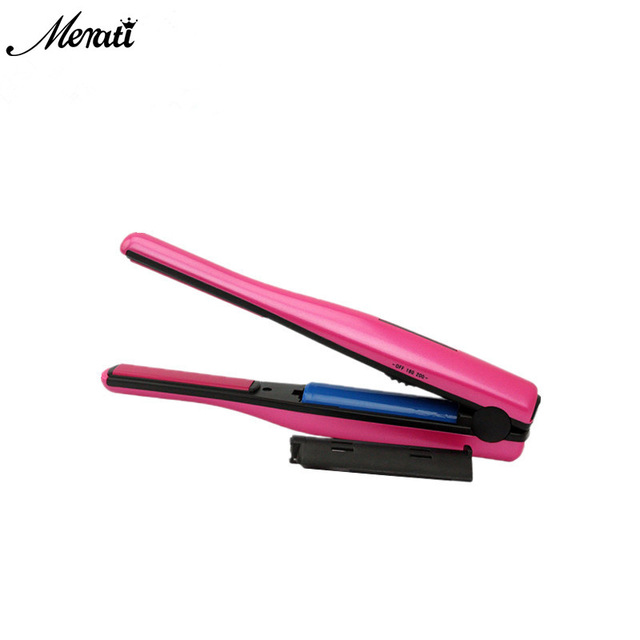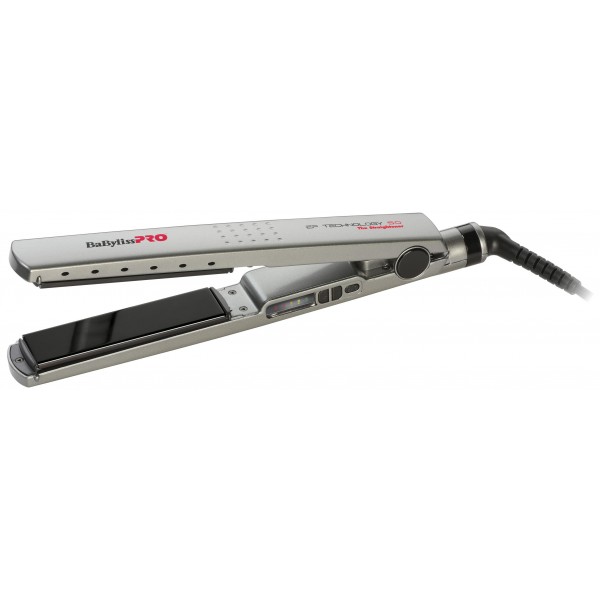Hey, have you ever wondered about the different methods available to achieve straight hair? Well, let’s discuss “Hair Straighteners Vs Chemical Straightening.”
When it comes to hair straightening, you have two primary options: hair straighteners or chemical straightening. Hair straighteners, also known as flat irons, offer a quick and temporary solution. With their adjustable temperature settings, they allow you to straighten your hair by applying heat directly to it. Whether you have thick, curly hair or just a few waves, hair straighteners can effectively transform your locks into sleek, straight strands.
On the other hand, chemical straightening, often referred to as a permanent straightening treatment, involves the use of chemicals to alter the hair structure. This method is more long-lasting compared to using hair straighteners. Chemical straightening treatments smooth out the hair cuticle, giving you smooth, straight hair for several months. However, it’s important to note that chemical straightening can be quite harsh on the hair and may require regular touch-ups to maintain the desired look.
So, next time you’re looking to switch up your hairstyle, consider the pros and cons of both hair straighteners and chemical straightening. Each option has its own benefits and drawbacks, so make sure to choose the one that aligns with your hair type, desired results, and overall hair health.
Hair Straighteners
Definition
Hair straighteners, also known as flat irons, are handheld electrical devices that use heat to temporarily straighten and smoothen the hair strands. They are a popular and convenient option for those who want to achieve sleek, straight hair without permanently altering their natural hair texture.
How it Works
Hair straighteners work by applying heat to the hair strands, which breaks down the hydrogen bonds in the hair shafts. These hydrogen bonds are responsible for the hair’s natural shape and curl pattern. Once these bonds are broken, the hair becomes malleable and can be straightened with the use of the straightening iron.
Tools and Products
To achieve optimal results with a hair straightener, it is important to use high-quality tools and products. A good quality flat iron with adjustable temperature settings is essential to prevent hair damage. Additionally, using heat protectant sprays, serums, and styling creams can help minimize heat damage and protect the hair from the heat of the straightener.
Pros
One of the biggest advantages of using a hair straightener is its versatility. It can be used to straighten or curl the hair, giving you the freedom to switch up your hairstyle whenever you desire. Hair straighteners also provide instant results, allowing you to achieve sleek and straight hair in a matter of minutes. Another benefit is the portability of hair straighteners, making them a convenient option for travel or touch-ups on the go.
Cons
While hair straighteners offer convenience and versatility, there are some drawbacks to consider. The heat used in the straightening process can damage the hair if not used properly. Excessive heat exposure can lead to dryness, brittleness, and breakage, especially for those with already chemically treated or fragile hair. It is essential to use heat protectant products and limit the frequency and duration of straightening sessions to minimize the risk of damage.
Chemical Straightening
Definition
Chemical straightening, also known as hair relaxing, is a hair treatment method that permanently alters the natural hair texture. It uses a combination of chemical solutions to break the disulphide bonds in the hair, resulting in straightened hair that requires minimal daily styling.
Types of Chemical Straightening
There are different types of chemical straightening methods available, such as thio-based relaxers, sodium hydroxide relaxers, and keratin treatments. Thio-based relaxers use ammonium thioglycolate to break the hair bonds, while Sodium hydroxide relaxers, commonly referred to as lye relaxers, use sodium hydroxide to straighten the hair. Keratin treatments, on the other hand, use a smoothing solution that coats the hair strands with keratin, making them appear smoother and straighter.
Procedure
Chemical straightening is a multi-step process that is typically performed by a professional stylist. The hair is first washed and then the relaxer or smoothing solution is applied to the hair strands, starting from the roots and working towards the ends. The solution is left on the hair for a specified period of time, depending on the desired level of straightness. After rinsing and conditioning the hair, it is blow-dried and flat ironed to seal in the straightened texture.
Tools and Products
Chemical straightening requires professional tools and products to ensure safe and effective results. These may include specialized relaxer formulas, protective creams or balms to protect the scalp and hairline, neutralizing treatments to stop the chemical process, and deep conditioning masks to restore moisture and nourishment to the hair after the treatment.
Pros
One of the main advantages of chemical straightening is its long-lasting results. Unlike hair straighteners, which only provide temporary straightness, chemical straightening permanently alters the hair’s structure, resulting in straight hair that remains until new growth occurs. This can be especially beneficial for individuals with highly textured or unmanageable hair. Chemical straightening also saves time on daily styling routines, as the hair remains straight with minimal effort.
Cons
While chemical straightening offers long-lasting results, it is important to be aware of the potential drawbacks. The chemical solutions used in the process can be harsh on the hair and scalp, leading to dryness, irritation, and breakage if not used properly. Additionally, chemical straightening is a permanent treatment and can lead to irreversible damage if not performed correctly or on suitable hair types. It is crucial to seek professional expertise and conduct a thorough consultation before opting for chemical straightening.
Comparison
Effectiveness
Both hair straighteners and chemical straightening methods can effectively straighten the hair. However, the results achieved through chemical straightening are more long-lasting and permanent, while hair straighteners provide temporary straightness until the next wash or heat exposure.
Duration
Hair straighteners offer instant results and can straighten the hair in a matter of minutes. On the other hand, chemical straightening is a multi-step process that requires more time, typically taking a few hours to complete.
Maintenance
Hair straighteners require frequent touch-ups to maintain the straightened appearance, as the effects are temporary and gradually revert back to the hair’s natural texture. Chemical straightening, on the other hand, requires minimal daily maintenance as the straightened texture remains until new growth occurs.
Cost
Hair straighteners are generally more affordable compared to chemical straightening treatments. Flat irons are a one-time investment, while chemical straightening requires professional services and the purchase of specialized products.
Health and Damage to Hair
When used correctly and with proper heat protection, hair straighteners can minimize damage to the hair. However, excessive heat exposure and improper use can lead to dryness, breakage, and damage. Chemical straightening treatments, if not performed correctly or on suitable hair types, can cause irreversible damage and breakage.
Suitability for Different Hair Types
Hair straighteners can be used on a wide range of hair types and textures, while chemical straightening is more suitable for highly textured or curly hair that requires more permanent straightening.
Long-term Effects
Chemical straightening permanently alters the hair’s structure, resulting in long-lasting straightness until new growth occurs. Hair straighteners, on the other hand, provide temporary straightness that gradually reverts back to the hair’s natural texture.
Flexibility and Styling Options
Hair straighteners offer greater flexibility and styling options, as they can be used not only to straighten the hair but also to create curls and waves. Chemical straightening limits the styling options, as the hair remains predominantly straight with minimal styling required.
Salon vs. At-Home
Hair straightening with flat irons can be done at home, providing convenience and cost savings. However, chemical straightening treatments are best performed by professional stylists in a salon setting, as they require expertise and specialized products.
In conclusion, both hair straighteners and chemical straightening methods have their pros and cons. Hair straighteners offer convenience, versatility, and temporary results, while chemical straightening provides long-lasting straightness and saves time on daily styling. It is important to consider the health and damage to hair, cost, suitability for different hair types, and long-term effects when choosing between these two options. Consulting with a professional stylist can help determine the most suitable method based on individual hair needs and preferences. Regardless of the chosen method, prioritizing hair care, using heat protectant products, and limiting excessive heat or chemical exposure are essential for maintaining healthy and beautiful straight hair.




